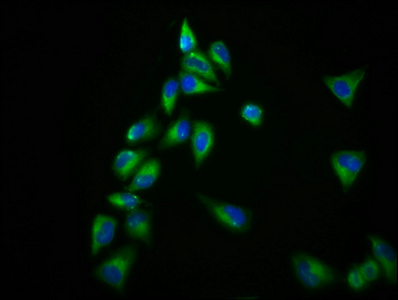G-protein coupled receptor which has an essential role in the development of hearing and vision. Couples to G-alpha(i)-proteins, GNAI1/2/3, G-alpha(q)-proteins, GNAQ, as well as G-alpha(s)-proteins, GNAS, inhibiting adenylate cyclase (AC) activity and cAMP production. Required for the hair bundle ankle formation, which connects growing stereocilia in developing cochlear hair cells of the inner ear. In response to extracellular calcium, activates kinases PKA and PKC to regulate myelination by inhibiting the ubiquitination of MAG, thus enhancing the stability of this protein in myelin-forming cells of the auditory pathway. In retina photoreceptors, the USH2 complex is required for the maintenance of periciliary membrane complex that seems to play a role in regulating intracellular protein transport. Involved in the regulation of bone metabolism.; Cleaved ADGRV1 beta-subunit couples with G-alpha(i)-proteins, GNAI1/2/3, and constitutively inhibits adenylate cyclase (AC) activity with a stronger effect than full ADGRV1.







